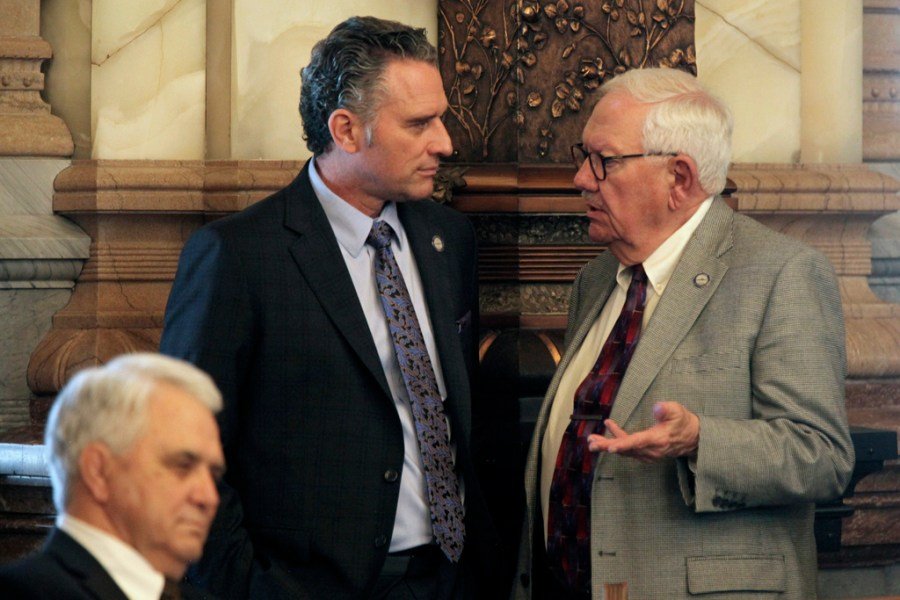
There’s a growing pushback against the practice of transgender surgery on minors at the state level. And it now appears Supreme Court justices are also questioning state-level efforts to silence counselors who raise concerns about the practice. As the skepticism spreads, we may see the transgender-surgery craze practiced on minors become as discredited as lobotomy surgeries from decades ago.
“A lobotomy,” Medical News Today explains, “is a type of brain surgery that involves severing the connection between the frontal lobe and other parts of the brain.” It was pioneered in the U.S. in the 1930s and was widely practiced in the 1940s and early ’50s. However, according to Britannica, “Today lobotomy is a horror story. Less than a century ago, it was a revolutionary ‘fix’ for misunderstood mental health problems.”
Lobotomies were performed on patients with severe mental health problems, such as schizophrenia or very aggressive behavior, at a time when there weren’t many treatment options for mental illness. But the practice came with very serious risks.
The Wall Street Journal looked at lobotomies performed by VA doctors on postwar psychologically damaged troops. Some veterans got relief. “Often, however, the surgery left them little more than overgrown children, unable to care for themselves.” The report added, “Many suffered seizures, amnesia and loss of motor skills.”
By the late 1950s, mental health professionals began to abandon lobotomies, especially with the development of anti-psychotic drugs such as chlorpromazine. Today, the lobotomy is considered a stain on U.S. medical history.
It is possible that, within a relatively short period of time — perhaps five to 10 years — transgender surgery on minors will likewise become an embarrassment to American medicine.
There are similarities to the lobotomy movement and current efforts to defend transgender surgery on minors. In both cases many practicing medical professionals denounced the procedures, while a relatively small percentage profited from the practice.
Both procedures were meant to have life-altering effects on the patients. Some benefited, while a large percentage had to deal with unanticipated and unwanted side effects for the rest of their lives.
And in both procedures, there’s no going back. Even when a person decides to detransition, he or she will face a lifetime of costly medications, sterility and other serious medical conditions.
And then there’s the issue of consent. Many of the lobotomized patients with serious mental health issues were not capable of giving informed consent. As for minors with gender dysphoria, their parents must sign off. However, some transgender counselors and medical providers reportedly pressure the parents, claiming that if they don’t consent, their child is at higher risk of committing suicide.
Finally, lobotomies became something of a medical fad, claiming to be the latest thing in medical innovation. Transgender surgery advocates promote a similar message.
There were more than 50,000 lobotomies performed in the U.S. According to the nonprofit organization Do No Harm, which opposes gender surgeries on minors, “between 2019 and 2023, there were at least 13,394 gender reassignment procedures nationwide on individuals 17.5 years old or younger, with the youngest 7 years old.” That includes 4,160 breast removal procedures and 660 phalloplasty procedures on minors.
There is one big difference between the two procedures. Since there were few good options for treating severe mental illness in the early 1930s and ’40s, it could be argued that, for some patients, a lobotomy was a better alternative to a life spent in a crowded insane asylum.
In contrast, there are alternatives for children presenting with gender dysphoria. As a result, a growing number of medical professionals and countries are pushing back against transgender surgery. Minors going through puberty are often confused and trying to figure out who they are. Social media can play a significant role in that confusion. So can certain advocacy groups.
Because children are evolving, it is critical they are not encouraged to take steps from which there is no return. Numerous studies, including the Cass Report, have found that most children with gender dysphoria eventually grow out of it.
If an individual decides to transition after turning 18 or perhaps 21, then as an adult, he or she has a right to make that decision — and live with the consequences. But that’s adults, not children.
As more people who were minors when they went through transgender surgery begin to speak out — and in some cases sue the doctors and clinics involved — a stigma will likely form about doing the procedure. And at some point, people will look back on the practice of putting minors through life-changing surgery and see it with the horror with which they now view lobotomies.
Merrill Matthews is a co-author of “On the Edge: America Faces the Entitlements Cliff.”






